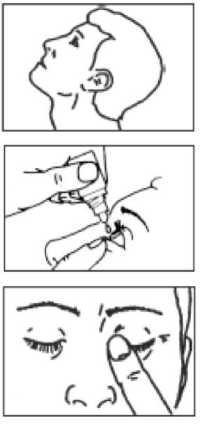Carteolol Hydrochloride 1% Eye Drops
Out of date information, search another< 150 mm

S. Gonzalez, s. I.
drtes giaficds
Mercurio 13 - Pol. Ind. "Coherman" 28970 Humanes (Madrid) *T. 91 697 65 02 - F. 91 697 18 03 artesgraficas@s-gonzalezsl.com
T
Prueba N.°: 5
Fecha: 17.7.2012
Cliente: BOTICALIA Codigo: TEO 1%/2% [0080, 0081] Edicion: 16.07.2012 Prospecto:
TEOPIC 1%, 2% EYE DROPS
Tamano: 150 x 540 mm
Plegado: 150 x 33,75 mm
N° de Colores: 1/1
Color: Negro
Cod. Barras: ---
Papel: Offset blanco 50 g/m2
Tipografia
PATIENT INFORMATION LEAFLET
TEOPTIC® 1% EYE DROPS TEOPTIC® 2% EYE DROPS
(carteolol hydrochloride)
Your medicine is available as the above two names, but will be referred to as Teoptic Eye Drops throughout this leaflet.
Read all of this leaflet carefully before you start to use this medicine because it contains important information for you.
• Keep this leaflet. You may need to read it again.
• If you have further questions, ask your doctor, pharmacist or nurse.
• This medicine has been prescribed for you only. Do not pass it on to others. It may harm them, even if their signs of illness are the same as yours.
• If you get any side effects, talk to your doctor, pharmacist or nurse. This incIudes any possible side effects not listed in this leaflet.
What is in this leaflet:
1. What Teoptic Eye Drops are and what they are used for
2. What you need to know before you use Teoptic Eye Drops
3. How to use Teoptic Eye Drops
4. Possible side effects
5. How to store Teoptic Eye Drops
6. Contents of the pack and other information
......i
cn
3
3
y_
A
MEDIDA FINAL PLEGADO
co
CO
Vi
cn
3
3
Helvetica Neue LT Std Tamano: 9,5 pt.
|
Correcciones □ |
Aprobado |
Fecha y Firma
Anverso / Front
E
E
o
LO
Teoptic Eye Drops are available in two different strengths containing either 1% or 2% of the active ingredient, carteolol hydrochloride.
Carteolol hydrochloride is one of a group of drugs called beta-blockers which can help to reduce pressure in the eye. Teoptic Eye Drops are used to treat conditions such as glaucoma (increased pressure in the eye).
Do not use Teoptic Eye Drops:
• if you are allergic to carteolol hydrochloride, beta-blockers or to any of the other ingredients of this medicine (listed in section 6).
• if you have now or have had in past respiratory problems such as asthma, severe chronic obstructive bronchitis (severe lung disease which may cause wheeziness, difficulty in breathing and/or longstanding cough).
• If you have a slow heart beat, heart failure or disorders or heart rhythm (irregular heart beats). Warnings and precautions
Before you use this medicine, tell your doctor if you have now or have had in the past
• coronary heart disease (symptoms can include chest pain or tightness, breathlessness or choking), heart failure
• disturbances of heart rate such as slow heart beat
• breathing problems, asthma or chronic obstructive pulmonary disease
• poor blood circulation disease (such as Raynaud’s disease or Raynaud’s syndrome)
• diabetes as carteolol hydrochloride may mask signs and symptoms of low blood sugar
• overactivity of the thyroid gland as carteolol hydrochloride may mask signs and symptoms
Tell your doctor before you have an operation that you are using Teoptic Eye Drops as carteolol hydrochloride may change effects of some medicines used during anaesthesia.
Other medicines and Teoptic Eye Drops
Teoptic Eye Drops can affect or be affected by other medicines you are using, including other eye drops for the treatment of glaucoma. Tell your doctor if you are using or intend to use medicines to lower blood pressure, heart medicine or medicines to treat diabetes. Please tell your doctor or pharmacist if you are taking or have recently taken any other medicines, including medicines obtained without a prescription.
Pregnancy, breast-feeding and fertility
Do not use Teoptic Eye Drops if you are pregnant or trying to get pregnant unless your doctor considers it necessary.
Do not use Teoptic Eye Drops if you are breast-feeding. Carteolol hydrochloride may get into your milk. Ask your doctor for advice before taking any medicine during breast-feeding.
Driving and using machines
Some people may have problems with their eyes such as blurred vision, while they are using Teoptic Eye Drops. If you are affected, you should not drive or use machinery.
Teoptic Eye Drops contain benzalkonium chloride
Benzalkonium chloride may cause eye irritation. Avoid contact with soft lenses. Take out lenses before you use Teoptic Eye Drops and do not put them back for at least 15 minutes. Benzalkonium chloride is known to discolour soft contact lenses.
Always use Teoptic Eye Drops exactly as your doctor has told you. You should check with your doctor or pharmacist if you are not sure.
The recommended dose is one drop into the affected eye twice daily. After using Teoptic Eye Drops, press a finger into the corner of your eye, by the nose (picture 3) for 2 minutes. This helps to stop carteolol hydrochloride getting into the rest of the body.
How to use Teoptic Eye Drops
• Wash your hands before using the drops
• Remove the cap from the dropper bottle
• Make sure that the tip of the bottle does not touch anything
• Hold the bottle in one hand between the thumb and forefinger
• Tilt your head back, and use your other forefinger to pull down the lower eyelid
1.
• Place the dropper tip close to your eye, but not touching the eye or lid, and gently squeeze the bottle to release one drop into your eye
2.
• Close your eyelid gently press the corner of your eye with your forefinger for 2 minutes
3.

• Replace the cap and wash your hands.
If you forget to use the Teoptic Eye Drops
If you forget to use your eye drops, put them in as soon as possible. Do not take a double dose to make up for a forgotten dose.
If you use more Teoptic Eye Drops than you should
If you use too much or if you accidentally swallow the eye drops, see your doctor at once or go to your nearest hospital casualty department. Take your medicine with you.
If you have any further questions on the use of this medicine, ask your doctor, pharmacist or nurse.
Like all medicines Teoptic Eye Drops can cause side effects although not everybody gets them.
You can usually carry on taking the drops, unless the effects are serious. If you are worried, talk to a doctor or pharmacist. Do not stop using Teoptic Eye Drops without speaking to your doctor.
Like other medicines applied into eyes, carteolol hydrochloride is absorbed into the blood. This may cause similar side effects as seen with intraveneous’ and/or ‘oral’ as applicable beta-blocking agents. Incidence of side effects after topical ophthalmic administration is lower than when medicines are, for example,

S. Gonzalez, s. I.
drtes giaficds
Mercurio 13 - Pol. Ind. "Coherman" 28970 Humanes (Madrid) *T. 91 697 65 02 - F. 91 697 18 03 artesgraficas@s-gonzalezsl.com
Prueba N.°: 5
Fecha: 17.7.2012
Cliente: BOTICALIA Codigo: TEO 1%/2% [0080, 0081] Edicion: 16.07.2012 Prospecto:
TEOPIC 1%, 2% EYE DROPS
Tamano: 150 x 540 mm
Plegado: 150 x 33,75 mm
N° de Colores: 1/1
Color: Negro
Cod. Barras: ---
Papel: Offset blanco 50 g/m2
Tipografia
Helvetica Neue LT Std Tamano: 9,5 pt.
|
Correcciones □ |
Aprobado |
Fecha y Firma
Reverso / Back
E
E
o
LO
taken by mouth or injected. Listed side effects include reactions seen within the class of beta-blockers
when used for treating eye conditions:
• Generalized allergic reactions including swelling beneath the skin that can occur in areas such as the face and limbs, and can obstruct the airway which may cause difficulty swallowing or breathing, hives or itchy rash, localized and generalized rash, itchiness, severe sudden life-threatening allergic reaction.
• Low blood glucose levels.
• Difficulty sleeping (insomnia), depression, nightmares, memory loss.
• Fainting, stroke, reduced blood supply to the brain, increases in signs and symptoms of myasthenia gravis (muscle disorder), dizziness, unusual sensations like pins and needles, and headache.
• Signs and symptoms of eye irritation (e.g. burning, stinging, itching, tearing, redness), inflammation of the eyelid, inflammation in the cornea, blurred vision and detachment of the layer below the retina that contains blood vessels following filtration surgery which may cause visual disturbances, decreased corneal sensitivity, dry eyes, corneal erosion (damage to the front layer of the eyeball), drooping of the upper eyelid (making the eye stay half closed), double vision, unusual sensitivity to light.
• Slow heart rate, chest pain, palpitations, oedema (fluid build up), changes in the rhythm or speed of the heartbeat, congestive heart failure (heart disease with shortness of breath and swelling of the feet and legs due to fluid build up), a type of heart rhythm disorder, heart attack, heart failure.
• Low blood pressure, Raynaud's phenomenon, cold hands and feet.
• Constriction of the airways in the lungs (predominantly in patients with pre-existing disease), difficulty breathing, cough.
• Taste disturbances, nausea, indigestion, diarrhoea, dry mouth, abdominal pain, vomiting.
• Hair loss, skin rash with white silvery coloured appearance (psoriasiform rash) or worsening of psoriasis, skin rash.
• Muscle pain not caused by exercise.
• Sexual dysfunction, decreased libido.
• Muscle weakness/tiredness, feeling of discomfort, feeling of tension or fullness in the nose, cheeks and behind your eyes, sometimes with a throbbing ache, fever, stuffy nose and loss of the sense of smell (sinusitis).
If any of the side effects get serious, or if you notice any side effects not mentioned in this leaflet,
please, tell your doctor or pharmacist.
• Do not store above 25°C. Discard 1 month after first opening.
• These eye drops are sterile until seal is broken. Do not accept for initial use if seal is broken.
• Keep out of the reach and sight of children.
• Do not use this medicine after the expiry date (This is printed on the carton label).
• If your doctor tells you to stop using this medicine, return any unused medicine to your pharmacist for safe disposal. Only keep this medicine, if your doctor tells you to.
• If the eye drops show signs of deterioration or discolouration, you should seek the advice of your pharmacist who will tell you what to do.
Medicines should not be disposed of via wastewater or household waste. Ask your pharmacist how to dispose of medicines no longer required. These measures will help to protect the environment.
Your medicine is called Teoptic Eye Drops.
It is supplied in a transparent plastic dropper bottle with a plastic tamper-evident screw cap containing a clear, colourless solution.
Teoptic Eye Drops are available in bottles containing 5ml of eye drops.
What is in your medicine
Each ml of eye drops contains either 10mg or 20mg carteolol hydrochloride as the active ingredient.
Also contains benzalkonium chloride (as a preservative), sodium chloride, sodium phosphate dibasic, sodium phosphate monobasic and water for injection.
Who manufactured your medicine
Manufactured by Otsuka Pharmaceutical S.A., Provenca 388, 08025 Barcelona, Spain and is procured from within the EU and repackaged by Product Licence Holder Boticalia Ltd., 27 Acton Park, The Vale, London W3 7QE.
Teoptic 1% Eye Drops Teoptic 2% Eye Drops
Leaflet date: 16.07.2012
PL 23038/0080 PL 23038/0081
TEO 1%/2%